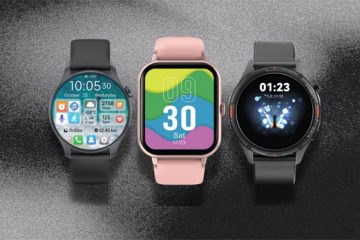We review Firefox Mobile (Fennec) to see whether the mobile browser is as good in smaller form factors as it has been on the desktop.
For some years now the Mozilla Foundation’s Firefox browser has been something of a people’s champion, wresting a huge slice of the market share from the likes of Microsoft and Apple and offering users a stable and mature alternative to proprietary software.
The open source ethos has shown itself more than suited to the dynamic environment of web development and security with exploits and flaws being patched by the community in near real-time. So when the Foundation announced the release of a mobile version of Firefox, people sat up and took notice. We’ve taken a look at Firefox Mobile (or Fennec as it is known) to see whether Mozilla has been successful in bringing its undoubted quality to our mobile devices.
Firefox Mobile is based on the desktop browser engine (3.6) allowing unrivalled compatibility, a speedy JavaScript engine and location-aware browsing. Many users are familiar with the ‘Awesome Bar,’ which offers very accurate search results as you’re entering a URL. Cutting down on human input whilst browsing is a real boon and naturally this applies in double measures for mobile use.
Installing the browser on your device is a breeze, all it takes is a couple of clicks in the Ovi store (or the Mozilla website) and you’re ready to explore the web.
Once we were all set up and ready we keyed in an address and were immediately struck by the fast, accurate rendering. Even content-heavy pages like IT PRO loaded quickly (under three seconds on our Wi-Fi connection) and really gave the desktop ‘feel’ to the experience. The usual Firefox accoutrements are available too, with add-ons, tabbed browsing, one-click bookmarking and the aforementioned ‘Awesome Bar’ all a mere thumb swipe away.
A thumb swipe left or right also gives users access to tabs, bookmarks and settings, allowing the small mobile screen to be dedicated almost entirely to the web page being viewed. The decision to un-clutter the display is a massive plus and when you need to control the browser the available buttons are well placed and thumb friendly. The design of the user goes some way to illustrate that intuitive isn’t just a sales pitch with Mozilla. It’s something users have come to expect and we aren’t let down with this offering.
At this early stage the list of add-ons for Firefox Mobile isn’t terribly large but it’s growing daily as the user base increases. The popular names are represented though, such as ‘Ad-block Plus’ and ‘No Script’ which really enable the user to take control of the security and content of their web browser. Also available is the very useful ‘Weave’ which allows users to remotely sync their bookmarks, passwords and even their current tabs with the mobile browser saving a lot of time and hassle. As with the desktop version add-ons are painlessly installed with a single click through the browser interface.
As with all good things there are a few drawbacks though. The browser is currently only available for Nokia’s Maemo operating system, or more accurately the N900 and N810 devices. Both of these devices offer resistive rather than capacitive touch screens and we felt this hampered stylus-free browsing.
While it is usable without a stylus it just isn’t responsive or accurate enough, which in our view unfairly limits Firefox’s usefulness as the true mobile application that it’s shaping up to be. The other caveat with Firefox is the lack of Flash. It was included in alpha and beta versions but has been disabled in the stable release due to compatibility problems.
It can be enabled via the ‘about:config’ page but Mozilla doesn’t recommend this as it can affect performance quite considerably. Whilst we commend its honesty we felt somewhat locked out of a world of potentially useful online apps.
Another issue is the retention of passwords and personal information. We found that, even after we had disabled our Weave Sync account and reset the application our bookmarks and passwords remained. As you’d expect the information can be easily removed but we felt that were one in a rush, this oversight could potentially prove costly, especially when work handsets change hands or are recycled. It’s certainly something to be mindful of in the corporate environment.











